It Lies Beneath
Detective Inspector Elise Sharma was certain that this case wasn’t to be taken at surface level . . .
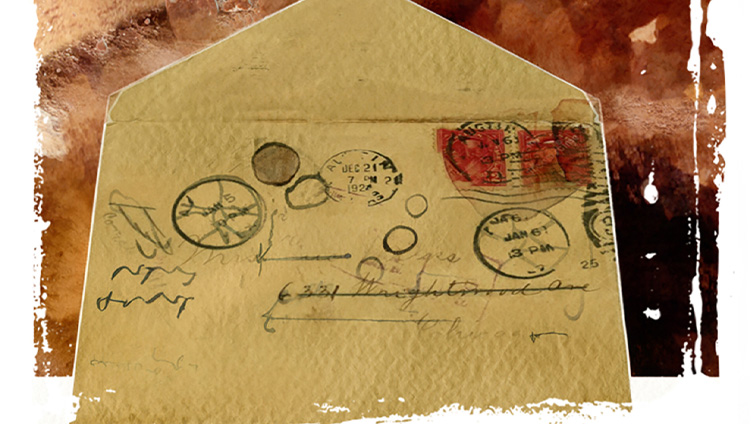
Illustration: Jim Dewar
Subscribe to The People’s Friend! Click here
Detective Inspector Elise Sharma was certain that this case wasn’t to be taken at surface level . . .

Illustration: Jim Dewar
CRIME SHORT STORY BY EWAN SMITH
Detective Inspector Elise Sharma was certain that this case wasn’t to be taken at surface level . . .
It was a noisy and chaotic scene. The police were doing their best to keep the two groups of protesters apart.
On one side were those who had been campaigning for months to have the statue in the park removed.
They claimed Andrew Horville’s fortune came from slavery, and that it was wrong to have him honoured in such a way.
On the other side were those who pointed out that thanks to him, the town had a magnificent library, a concert hall and this park.
Removing the statue would be like trying to erase part of the town’s history, they claimed.
Privately, Detective Inspector Elise Sharma felt some sympathy for the “remove” campaigners, but kept her views to herself.
The job of the police was to maintain public order and that was what she was currently focusing on.
At a recent stormy meeting, the council had voted to have the statue removed from Horville Park and placed in the museum.
And that afternoon, the removal was taking place.
“Save our statue!” voices shouted from one side.
They were matched by chants of “Slavery Out!”, all backed by a cacophony of drums, hooters and whistles.
“I should have brought ear-plugs,” Elise muttered.
There was plenty of noise but no real attempt to stop the removal of the statue.
The crowd had been kept well away from the plinth, so the workmen could go about their business.
“I’ll be glad when this is done,” PC Colin McFarlane muttered next to her.
This statue has caused nothing but trouble for months.
It was true, Elise thought.
Since the controversy blew up, barely a week had gone by without some stunt around the statue.
Once it was in the museum, perhaps that would mean one less problem for the police.
She winced as the anti- statue campaigners started blowing their whistles.
The pro-statue protesters responded with hooters.
But then the noise began to die down again.
The workmen had removed the bolts fixing the statue to the concrete plinth, and chains from a crane were attached to it.
The statue was about to be lifted into the air.
Everything seemed to be happening very slowly.
“Get on with it!” someone shouted, causing laughter from both sides.
The chains gradually tightened and then, to a mix of cheers and boos, the statue rose into the air.
The crane turned gradually and lowered it on to a waiting flatbed lorry.
“Good riddance,” came a yell amid the relative quiet.
That was a sign for both sides to get back to their shouting and chanting.
Before long, the statue was secured on the lorry and attention turned to removing the plinth.
Somehow, the removal of the statue had altered the atmosphere.
Those calling for the statue to stay in place realised they weren’t going to have their way.
It seemed to Elise that the protest was coming to a natural conclusion.
The passion on both sides had been spent and people’s minds were turning to heading home.
But at that moment a piercing scream rang out.
Elise heard a voice in her earpiece.
“DI Sharma, this is PC McFarlane. I’m at the plinth. You need to get here – now.”
Elise made her way quickly along the line of police officers, trying not to appear to be rushing.
The scream was followed by a growing noise from the crowd, which sounded urgent and concerned.
The plinth hung about
10 feet in the air, swaying slightly from the chains.
Colin’s face had a look of serious concern.
There was no need for an explanation, for Elise had turned to the square of earth from which the plinth had been lifted.
There, partly buried, was the unmistakable sight of a human skeleton.
The Chief Inspector had called Elise back to the station to give a report.
He frowned at her.
“So, the protesters have gone?”
Elise nodded.
“Once the statue and the plinth were taken away on the lorry, the focus for the protest left with them.”
“Is the area where the statue stood secured?” the Inspector asked.
“That was our first task,” Elise said. “It’s being treated as a potential crime scene.
“A few folk are hanging around but there’s nothing much for them to see.”
“What about the media?”
A rueful look crossed Elise’s face.
“There are plenty of them there,” she replied. “The protest had generated a lot of interest anyway.
“When rumours spread about possible human remains being found, that only attracted more.
“But I’ve made it clear to the officers on site that no information should be given to the media, other than through official channels.”
The Chief Inspector nodded.
“It’s vital that we keep a lid on media interest in this case,” he said.
“The last thing we need is for more fuss to be caused by these ‘remains’.”
“I’m afraid they are human remains, Chief,” Elise said. “They were partially buried.
“But I saw enough to be clear that it was someone’s skeleton under the plinth.”
The Chief Inspector shook his head.
“Then we definitely need to damp down the media excitement,” he stated.
“I’ll keep tomorrow’s briefing low-key.
“I’ll say they are clearly ancient remains of historical interest only.”
“We can’t be sure of that at the moment,” Elise said.
“Of course they are. Andrew Horville’s statue has been in place for . . . a hundred and fifty years?”
“One hundred and fifty-six,” Elise murmured.
“In that case, even if there was something suspicious about the death, it’s hardly a recent crime.”
Elise frowned.
She didn’t like to make assumptions before the evidence was collected.
“I’m putting you in charge of this,” the Inspector said.
“Right you are, Chief.”
“Go through the motions, complete your investigation and file a report.
It’s an open-and-shut case, so it shouldn’t take long.
Elise said nothing.
She took pride in her work and never simply went through the motions with an investigation.
This case would take as long as it required.
“If that’s all, I’d like to get back to the scene,” she said.
“I want to see what preliminary results Martin Hunter and the forensic team have come up with.”
“You do that,” he said. “I’ll organise the press briefing myself.
“No need to take you away from your work.”
Elise stifled a smile.
When it came to the media, the Chief Inspector liked to be front and centre.
That suited Elise perfectly.
Back at the park, it was early evening and a dozen or so people were gathered round the roped-off area.
Some were journalists whom she recognised.
They hurried over, full of questions.
Elise shook her head.
A constable lifted the crime scene tape to let her through.
A mobile lighting system was being set up.
Elise had a quick word with the person in charge then headed for the tent that had been put up over the site of the statue.
She stood for a moment taking in the scene.
Four members of the forensic science team were kneeling on the ground.
Martin Hunter, the chief forensic science officer, stood up when he saw her.
“An interesting case.” He smiled.
“Not too interesting, I hope,” Elise replied.
In her experience, interesting cases meant complicated cases.
“The remains appear to be those of an adult male,” Martin explained.
“The skeleton is mainly intact, but a lot of the bones are fractured.
“That was possibly caused by the weight of the plinth and the statue.”
“What about a cause of death?” Elise asked.
“Initial indications are that it was a heavy blow to the back of the head.”
“So, a possible murder?” Martin nodded. “What age are the remains?”
“We’ve found fragments of clothing,” Martin revealed. “They suggest the victim was buried forty to fifty years ago.”
Elise’s eyes widened.
“This happened in living memory?”
“That’s what seems to be indicated,” Martin said.
Elise sighed.
The chief’s open-and-shut case was already starting to creak open again.
Elise returned to the statue site next morning.
The skeleton had been removed and Martin was now examining the remains back at the station.
A single forensic science officer remained, sifting through the earth with a trowel and a metal sieve.
“Are you looking for anything in particular?” Elise asked.
The officer looked round.
“Not really. I’m just ensuring we haven’t missed any smaller items which might be buried deeper.”
A constable opened the flap of the tent.
“DI Sharma, there’s someone here to see you.”
Elise saw a woman standing on the other side of the crime-scene tape.
“Professor Okoli, I presume?” she called.
She had contacted the history department at the university and asked to speak to someone who could give background on Andrew Horville’s life.
Professor Ngozi Okoli had offered to meet her at the site of the statue.
The two found a bench nearby. Professor Okoli turned to Elise.
“So what was it that you wanted to know?”
“Just some background really on Andrew Horville and why a statue of him has stood in this park for so long,” Elise replied.
Professor Okoli smiled.
“It’s not just the statue,” she said. “The grounds of the park itself were purchased by funds left after his death.
“He was one of the town’s greatest benefactors.”
The professor outlined Andrew Horville’s story.
He had lived in the 17th and 18th century and was something of a merchant adventurer.
He began trading in gold, silver and ivory from Africa.
But increasingly he turned to selling slaves.
Over the years, his ships transported tens of thousands of people to the Caribbean to work on plantations.
“He became immensely rich,” the professor continued. “He moved back, settled here and was soon elected mayor.”
“Has the statue always been in the same place?”
That was the central question in Elise’s mind.
How had remains from recent times ended up under a century-old statue?
Professor Okoli nodded.
The statue was placed there in 1867 and hasn’t moved since
she said. “Until yesterday, of course.”
“That’s not completely true,” a voice stated.
Elise had been vaguely aware of a man gradually wandering into earshot.
He was probably in his late sixties, she thought.
Professor Okoli looked at the man curiously.
“You’re saying it has been moved?”
The man nodded.
“When was this?” Elise asked sharply.
If true, this could make a significant difference to her investigation.
“1977,” the man replied. “The year of the late Queen’s Silver Jubilee.
“I’m Rhys Oldroyd. I’m a roofer, mostly retired now.
“But back then, I was just a young lad starting out in the building business.
“I worked for Justin O’Neill. You may have heard of him.”
Elise nodded.
Over the years the local developer had been involved in a number of significant building projects in the town and elsewhere.
“Anyway,” Rhys went on, “it was jubilee year and the Queen was going to visit and host a public reception in Horville Park.
“So the council decided to spruce it up a bit.
“We were taken on to repoint some walls in the park, and the statue was taken away for cleaning.
“It was weird to see the concrete plinth there without the statue on top.
“I remember it well . . .”
Rhys hurried through the park. He was late for work and he knew that Tony Farrell, the supervisor, would rage at him.
He would have run, but his head was banging like a hammer on an anvil.
The football game the day before had been brilliant and Rhys had scored a cracker of a goal.
But the celebrations had gone on late and he was still feeling the after-effects.
Not for the first time, he vowed to cut down on drinking in future.
Especially when he had an eight-hour shift next day.
There were seven of them in the squad and they’d been doing different jobs around the park for the past few days.
Young and unskilled, Rhys tended to end up with the heavy lifting work. Not that he minded.
Tony kept them hard at it but the blokes were a good laugh, and they had fun.
He stopped by the empty statue plinth and waited.
The guys were scattered here and there and Tony was giving each of them their instructions.
With a bit of luck, he wouldn’t notice that Rhys had turned up late.
He put his bag of tools on the plinth and stretched.
As he waited, something caught his attention.
The statue’s concrete plinth was a plain, solid structure sunk into the ground. But it was odd.
The grass in the park was cut regularly and kept tidy, but there were a few weeds growing round the base of the plinth.
None was more than about six inches high, but it seemed to Rhys that some had been disturbed.
He stepped back to get a better look.
There was loose earth along the edge of the plinth, and the roots of some weeds were exposed.
He made his way round the structure. It was the same on the other sides.
It was as if the plinth had been lifted and set down.
“What time do you call this?” Tony Farrell was striding over.
“Sorry about that, Tony,” Rhys apologised. “I forgot to set the alarm.”
“I’m not interested in your excuses,” Tony said.
“We have two days to finish the work in the park and we’re already behind.
“Now go and unload the bags of cement from the van and be quick about it.”
Rhys pointed to the base of the plinth.
“Have you seen this? It looks as if the plinth has been moved,” he said.
Tony’s face flushed red.
“What are you talking about?” he asked.
“It’s true. The earth has been disturbed.”
And that was when Tony went on a furious rant.
Rhys listened to him open-mouthed.
As supervisors went, Tony was pretty decent.
He made sure everyone in the squad did a proper day’s work to a high standard.
But in general, he was fair as well.
It was unlike him to be cursing and swearing.
Rhys saw no point in trying to defend himself.
“Sorry, Tony. I’ll go and unload that cement, will I?”
Rhys looked at Elise and Professor Okoli and shrugged.
“And that was that,” he finished.
“I got on with my work and nothing more was said about the plinth.
“But it seemed clear to me that it had been moved and I couldn’t work it out.
“It nagged at me at the time, but life went on and I forgot all about it
“That is until I heard about human remains being found there.”
Elise drove back to the station, her mind churning.
It was a small incident from over 45 years ago recalled by someone who, by his own admission, had been tired and hungover.
How much faith could she put in such a statement?
Elise pressed the doorbell and stepped back.
It was a very fancy house.
Justin O’Neill had obviously done well for himself in life.
The door was opened by a man in brown slacks and a pale blue cardigan.
There was a chunky gold ring on his finger and his leather shoes had a designer look about them.
This was Justin O’Neill.
Elise held out her identity badge.
“Good morning, Mr O’Neill,” she greeted him. “I’m DI Elise Sharma. Could I have a word with you?”
A slight frown crossed his tanned features.
“Is there a problem, DI Sharma?” he asked.
“You may have heard of the remains found under the statue of Andrew Horville recently.”
“I did.”
“I’m in charge of the investigation,” Elise said.
“You think I can help?”
“I just need some background to a particular aspect of the investigation. It shouldn’t take long.”
“Come in, then.” He shrugged and stood back.
He led Elise to a spacious lounge and offered refreshments.
She declined politely.
“Do you recall some work that your company did in Horville Park in the summer of 1977?” Elise enquired.
He blinked.
“In 1977?”
“It was the year of the Queen’s Silver Jubilee,” Elise specified.
He laughed lightly.
“I’m aware of that, Detective Inspector,” he said.
“I’m just struggling to remember a particular building job my company did forty-six years ago.”
“As I understand it, one aspect of the work was repairing walls in the park.”
Justin frowned.
“Now you say that, I do remember it vaguely,” he said. “It was a job for the council.
“At the time, I was just vacuuming up all their small contracts by offering highly competitive rates.
“That way, I hoped to move on to some of their more significant projects.”
Something that he had done very successfully, Elise thought.
“So what is it about this job that you wanted to know, Detective Inspector?” he asked.
“Do you recall if the plinth of Andrew Horville’s statue was moved as part of that work?”
A looked of amusement crossed his face.
“I haven’t the faintest idea,” he admitted.
“My role in the company was developing the business and negotiating new contracts.
“I had very little to do with the actual work.
“Back in the seventies, that was all overseen by Tony Farrell.”
There was a sudden frenetic yapping as a little terrier rushed in.
“Tony Farrell? Why are you talking about Tony Farrell?” a voice asked.
Elise got to her feet.
It was partly to avoid the terrier which seemed very interested in her shoes, but also because a blonde woman had just come in.
Elise recognised her from photos she had seen earlier. Justin’s wife, Corinne.
She gazed at Elise and Justin introduced her.
“Darling, this is Detective Inspector Sharma,” he said.
Corinne’s eyes grew suddenly cold.
“Police? Should you be speaking to the police without your lawyer here?”
Justin burst out laughing.
“Goodness, I’m not being interviewed,” he said.
“DI Sharma is just here to get some background.
“She’s investigating the case of the remains found under the statue of Andrew Horville.”
Corinne looked shocked.
“What does that have to do with you?” she asked. “Or with Tony Farrell?”
Elise explained about the work being done in the park at the time of the late Queen’s Silver Jubilee.
“It’s been suggested that while that work was going on, the plinth was moved.”
“Who suggested that?” Corinne asked sharply.
“It has come up during the investigation,” Elise said. “Do you know if that would have happened as part of the work, Mr O’Neill?”
He lifted his hands.
“I really have no idea. But my secretary never threw away anything,” he added thoughtfully.
“I wonder if I could dig up some paperwork from the time.”
He hurried away. There was a moment of silence.
“Did you work for your husband’s company, Mrs O’Neill?” Elise asked.
“Certainly not.”
“Perhaps this Tony Farrell will remember something about the work.”
“Tony died ten years ago this month,” Corinne returned.
“I’m sorry to hear that,” Elise murmured.
She thought of asking about the circumstances of the death, but Corinne had turned to the window.
She didn’t seem to be in a mood for questions.
Just then, her husband returned with a book.
“I found this,” he announced. “It’s the company diary for 1977.
“It turns out I was in London at the time the work was being done in the park.
“I was trying to finalise some contracts there. It’s no wonder my memory of the events is a bit vague.”
Little more came from the interview, and it was a thoughtful Elise who drove back to the police station.
She wasn’t sure if she’d learned anything of use.
But then her phone rang. It was Martin.
“Could you drop by the lab when you have a moment, Elise?” he said.
“There’s something here that you need to see.”
“I’ve completed the examination of the remains,” Martin told her.
“And was it murder?” she asked.
“It certainly looks that way,” he replied. “The death was caused by a heavy blow to the skull.
“It’s hard to see how it could have been an accident.
“But that’s not why I called you. I may have identified the victim.”
Elise’s eyes widened.
Martin brought out a photo taken at the autopsy.
It showed a bone, part of which was covered by a small cylindrical sleeve.
“What am I looking at?” Elise frowned.
“It’s an ulna,” he explained, “one of the long bones in the forearm.
“It had been broken a year or two before the victim’s death and that sleeve you can see is called an ulnar clip.
“It’s there to strengthen the bone.”
“And that has helped you identify the victim?”
“You’ve been very fortunate, Elise,” Martin told her. “Few of these particular ulnar clips were used in practice.
“There was a problem with the material and they were withdrawn after a very short period.”
“Were records kept of the patients they were fitted to?” she questioned.
“Better than that. Each of the clips was numbered.”
Martin lifted a sheet of paper from his desk.
“This particular one was fitted to a twenty-year-old man in the hospital here in town on May 12, 1975.”
“Do you have a name for him?” Elise asked eagerly.
“I do,” Martin replied. “He was Duncan Ferguson. No address, unfortunately.
“He’s down here as NFA – no fixed abode.”
He looked at Elise apologetically.
“That might make it more tricky for you.”
“Don’t apologise,” Elise said. “This is a fantastic step forward. Thank you.”
Back at her desk, Elise logged onto her computer.
She was confident the system would track down this Duncan Ferguson.
If he had been homeless, then it was likely he had come in contact with the police at some point.
It was as she had hoped.
The system quickly came up with a hit.
Duncan Ferguson was a young man with a record.
Theft, burglary, breaking and entering, public drunkenness.
He had clearly been well known to police at the time.
Elise looked at his photograph.
“It looks as if you’re the man we’ve been looking for,” she murmured.
She read through the long list of charges.
It seemed he had come to the police’s attention for one thing or another every few weeks.
It had never been for anything particularly serious.
He had been given the occasional jail sentence but only for short periods.
Then Elise came across an account of Duncan being involved in a fight.
His arm was injured and he was taken to hospital.
The dates coincided with the time the ulnar clip had been fitted.
“You are our man!” she said in satisfaction.
Often in cases like these, it was never discovered whose the remains were.
She continued to check the records.
Duncan Ferguson was booked by police for various incidents up to June 12, 1977.
And then it stopped. The file had nothing further.
“As if he just disappeared,” Elise murmured.
For decades, the Refuge had supported homeless people in the town.
It was both a night shelter and advice centre.
Elise dropped in to see Kandace Palmer, the senior manager.
She explained some of the background of the case.
Kandace laughed.
“It was forty-six years ago! That was before most staff here were even born.”
“Do you keep any records from those days?” Elise asked.
Kandace shook her head.
“To be honest,” she said, “we only maintain the bare minimum of records at The Refuge.
“Our clients are a bit sensitive about having information kept on them.
“We certainly don’t have anything from the 1970s.”
“What about your regulars?” Elise pressed on.
“Are any of them old enough to have been around in those days?”
Kandace gave a rueful smile.
“Sadly, old age and homelessness tend not to go together.” Then she frowned. “Though there is one person . . .”
Deeny Watts had his own small room in sheltered accommodation.
When Elise and Kandace arrived, he insisted on making them a cup of tea.
On the way, Kandace had explained that Deeny had been homeless by choice for decades.
He was only persuaded to move into sheltered accommodation when it became clear that he could no longer cope on his own.
They sat round a little table. Elise explained why she was there and showed Deeny the photo.
“I’m looking for any information you can give me. Did you know this man – Duncan Ferguson?”
Deeny gazed at the photo for a long time. Elise wondered if he had dozed off. Eventually he spoke.
“Fargo – that was what we called him,” he said.
“So you knew him?” Elise said eagerly.
Deeny turned. There were tears in his eyes.
“He was a good friend,” he stated. “He would share anything he had with you. Look after you if people were giving you grief.”
“What happened to him?” Elise asked.
Deeny turned back to the photograph. There was another long silence.
“He told me that he was going to make money,” Deeny said. “Good money.”
“Did he say how?”
Deeny shook his head.
“Only that it would be enough for us to get a place of our own,” he said.
“He said he’d see me later. But I never saw him again.”
And that was all that Deeny would say.
Elise questioned him gently but he just shook his head, descending into silence, his eyes gazing far back into the past.
The Chief Inspector appeared in the doorway of Elise’s office.
“Could you give me an update?” he asked.
“There’s been progress, Chief,” she revealed.
“The remains are from the late 1970s, and are those of an adult male.
“The forensic evidence suggests that he was murdered.”
The Chief Inspector frowned.
“But how could human remains from the 1970s end up under a statue that was erected years before?”
“We’re still not clear about that,” Elise said. “But it’s possible the base of the statue was moved in 1977.
“The park was being prepared for a visit from the late Queen as part of her Silver Jubilee celebrations.”
The Chief Inspector’s face went pale.
“The last thing we need is royalty being brought into this,” he said. “The tabloids would be all over us.”
Elise stifled a smile.
The Chief Inspector was very concerned about the police’s public image.
“The good news is that Martin Hunter has identified the remains,” Elise added. “They belonged to a homeless man and petty criminal, Duncan Ferguson.
“He’s our main focus for investigation.”
“What’s your next step?”
“I’m going to speak to Justin O’Neill again,” she stated. “I’ve made an appointment to see him this morning.
“I want to find out if he knew the victim.”
Elise walked towards the door of the O’Neill mansion.
She was trying to fit the evidence into some sort of pattern.
Homeless people often lived chaotic, unsafe lives. It wasn’t hard to imagine situations arising that might lead to a death.
But how and why had the remains been buried under the statue’s plinth?
There were far easier ways to dispose of a body.
An expensive-looking Jaguar was parked in front of the mansion.
She clearly wasn’t the only visitor.
Justin answered the door and led her through to the lounge, where Corinne was chatting to a man with a very familiar face.
“DI Sharma, have you met Rufus Burr?” Justin asked.
“I have indeed,” Elise answered.
Rufus was a hard-headed and very pricey lawyer. Elise had come up against him numerous times in court in the past.
They shook hands briefly.
“I asked Rufus to sit in during this meeting.”
“Of course,” Elise said.
She found it interesting that Justin had felt it necessary to have his lawyer present.
He was perfectly entitled to do so, but it did make her wonder if there was something about the case which troubled him.
Rufus sat forward.
“I’ve explained to Mr and Mrs O’Neill that they are speaking to you on an entirely voluntary basis.
They are under no obligation to answer any questions.
Elise nodded.
“Absolutely,” she agreed. “I am simply here to gather background information on the case I’m working on.
“As it happens, I have some news.
“We have managed to identify the remains of the body found under the statue’s plinth.
“Mr O’Neill, does the name Duncan Ferguson mean anything to you?”
Elise was watching Justin closely.
But there seemed to be no particular reaction on his face.
He shook his head slowly.
“I don’t think so.”
“Is he the person found under the statue?” Rufus asked sharply.
“We believe so,” Elise replied.
She was still watching Justin.
He had begun to frown and touched a finger slowly to his lips.
It was as if a vague memory was coming back to him.
“Hang on a minute,” he said. “Duncan Ferguson.
“There was someone, way back, in the early days.
“He was a young chap – a carpenter, I think.
“He worked for us for a while. But he was very unreliable. Terrible time-keeping.
“And you could often smell the drink on him.
“We got rid of him in the end.” He turned to his wife. “Do you remember, darling?”
“Of course I don’t, it was decades ago,” she replied irritably.
“When was this?” Elise asked Justin.
He shrugged.
“Mid-seventies, I think,” he said. “Not that I ever had much to do with him.
“It was Tony who dealt with the workforce.”
Corinne got up with her terrier in her arms.
“Is there anything else, Detective Inspector?” she asked. “I want to take Lowri for a walk.
“We clearly have nothing more to tell you about this Fargo person.”
Rufus hurriedly stood up.
“Yes, I think this is a suitable time to end the meeting.”
Elise allowed herself to be shown out by Justin.
As the door closed behind her, there was a cold smile on her lips.
Rufus had brought the meeting to an abrupt end.
And he had done so because he had noticed the same thing she had.
If Corinne had no memory of Duncan Ferguson as she claimed, how had she known that people called him Fargo?
Elise gazed at her computer with a frown.
She had been checking to see if anyone involved in the investigation had a police record, apart from Duncan Ferguson.
It turned out that Corinne O’Neill had been fined for speeding a couple of times, and Justin O’Neill had once failed a breathalyser test back in the 1980s.
But there was nothing more significant than that.
However, as she checked the records, she noticed an attempted burglary at the O’Neills’ house in 1977.
The year caught Elise’s attention and she brought up the details.
The attempted burglary had been reported by Corinne, which made Elise wonder where Justin had been at the time.
Corinne had apparently been out for the night and had come home to find evidence of a break-in.
According to the report, there were signs of the house being searched, with cupboards and drawers hanging open.
There were no details of anything being stolen, and it was thought the burglar may have been disturbed.
An investigation was carried out but the culprit was never identified.
Elise would have thought no more of it except that, on checking the dates, she realised that the burglary took place close to the time when the statue had been removed for cleaning.
Though that didn’t seem to be anything other than a coincidence.
She pondered on the accumulating evidence as she drove through town.
It was like working on a complicated jigsaw puzzle.
The number of pieces was growing all the time.
Somehow she had to fit them together into a pattern that made some sort of sense.
She pulled up at a semi-detached house in a quiet street with a small, tidy front garden.
An elderly woman in a maroon cardigan and plain skirt answered the door.
Elise held up her identity card.
“Mrs Dunbar, thank you for agreeing to see me.”
The woman stepped back.
“Come in, Detective Inspector.”
Margaret Dunbar was the sister of Tony Farrell, who had worked for Justin O’Neill back in the 1970s.
She showed Elise into a small sitting room and went to make tea.
Elise considered how best to approach the interview.
There were different techniques that could be used in such circumstances.
Sometimes, you encouraged the person to think of you as a friend.
Sometimes, you reminded them of their duty as citizens to help the police.
Occasionally, you pressed the person – hard.
But with Margaret Dunbar, Elise thought that simply being straight with her might be the best approach.
Margaret came back with the cups, teapot and a few biscuits on a tray.
Elise allowed her to go through the routine of pouring the tea and offering a biscuit.
Only then did she begin.
“You may have heard that human remains were recently found under the statue of Andrew Horville in the park.”
Margaret nodded.
“It looks as if they were placed there in 1977,” Elise added.
“The Silver Jubilee year,” the elderly woman said.
Elise smiled.
“Indeed,” she said. “Justin O’Neill’s company had been contracted to carry out some work in the park around that time.
“And your brother, Tony, acted as the supervisor.
I’m trying to get a picture of the work and the people involved.
“Could you tell me a bit about your brother?”
Margaret reached over to a framed photograph and handed it to Elise.
A young man and woman sat on a rug at the beach, laughing at the camera.
The woman was clearly a young Margaret.
“Is that Tony with you?” Elise asked.
“It was taken at Rhyl one summer,” Margaret said. “We went there with Mum and Dad.”
Her eyes welled up.
“Tony was a good-looking lad,” Elise murmured.
“He never had any trouble attracting girls.”
Elise thought there was a touch of bitterness to the comment and she waited.
After a moment, Margaret began to talk.
Tony was a year older than his sister and the two always got on well.
Tony left school at sixteen and became apprenticed to a builder.
Aged around twenty, he began working for Justin O’Neill.
He did well and after a couple of years had been promoted to supervisor.
He had thrived on the responsibility.
“They all liked him as a supervisor and Justin O’Neill put a lot of trust in him,” Margaret concluded.
“What about his personal life?” Elise asked. “Did he have anyone special?”
Margaret shook her head.
“He went out with any number of different girls,” she said.
“Did you see a lot of him?” Elise asked again.
Margaret hesitated.
“We had always been close,” she began, “but then I got married, and the twins arrived soon after.
“That kept me busy and I didn’t see so much of Tony.
“Then something seemed to change between us.”
“How do you mean?” Elise enquired.
“Tony and I had always shared everything,” Margaret frowned. “We never had secrets.
“But it started to feel as if he was keeping things hidden from me.”
“What sort of things?” Elise said.
“I wasn’t sure,” Margaret confessed. “But he stopped telling me about the women he was going out with, which was odd.
“He had always enjoyed female company.”
“Do you think he was involved with someone, but in secret?” Elise asked.
Margaret nodded.
“Did you have any idea who?” the detective pressed again.
There was a silence.
Then Margaret sighed.
“I did wonder about Corinne O’Neill.”
Elise sounded the knocker and the door opened almost at once.
The roofer, Rhys, stood there with a Spaniel by his feet and a lead in his hand.
He looked at her in surprise.
“DI Sharma. Hello again.”
“I’m sorry to trouble you, Mr Oldroyd. Could I have a word?”
“I was about to take Jessie to the park. Can we walk and talk?”
Elise smiled.
“Of course. A bit of fresh air might help clear the cobwebs in my head.”
Rhys zipped up his coat and pulled the door closed.
“Is this about the case?”
Elise nodded.
“What do you remember about Tony Farrell?”
Rhys thought as they made their way along.
“He was my boss,” he said, “so the two of us were never exactly friends.”
“You considered him to be your boss rather than Justin O’Neill?”
“Justin O’Neill owned the company but we never saw much of him.
“It was Tony who was in charge of us.”
“So what sort of person was he?” Elise asked.
“He was serious about the work,” Rhys replied. “No messing with Tony.
“He insisted on high standards but if you did your job properly, then he didn’t give you grief.
“Generally, I’d say that Tony was fine as bosses go. At first, at least.”
Elise frowned.
“At first?”
“It was odd,” Rhys said. “He seemed to change.
“He became short-tempered and snappy.
“And he started to let things slip at work as if he didn’t care any more.”
“When was this?” Elise questioned.
“Hard to say exactly. But I had enough in the end, and I left early in 1978.”
“Did you keep up with your old workmates?”
Rhys pursed his lips.
“I bumped into some of them occasionally,” he revealed. “I heard that Tony had left the company not long after I did.”
“Any idea what caused the change in his personality?” Elise asked.
“Not really. It happened quickly. It was sad, really.”
Elise gazed at the crime board in her office. It was a mass of photographs, names, dates and information.
In her hand, she held the 1977 report of the burglary at the O’Neills’.
It was around the same time that the statue of Andrew Horville had been removed for cleaning and Rhys had suspected that the plinth had been moved.
Was it just coincidence?
Then there was the possible relationship between Corinne O’Neill and Tony Farrell.
It was only a suspicion of his sister’s, but what if that had been true?
Then there was the fact that Corinne apparently knew the victim, Duncan Ferguson.
Elise grimaced. She felt she had all the pieces of the jigsaw. She just couldn’t seem to fit them together.
There was a knock at her door. It was the Chief Inspector.
He joined her by the crime board.
“Any closer to wrapping up the case?” he asked.
Elise knew that he was keen for the case to be signed off and filed away.
But she wasn’t in a position to give him that satisfaction yet.
“I’m sorry, Chief,” she said. “There’s still some way to go.
“But a good deal of progress has been made.
“The remains have been identified, and the victim was apparently murdered.”
“Do we know how the remains could have been buried under the plinth?” he asked again.
“According to Rhys Oldroyd,” Elise began, “there was a fork-lift truck on the site at the time.
“It might have been used to partially lift the plinth so that the remains could be placed underneath.
“It was a secluded area.
“With the park closed for the restoration work, witnesses were unlikely.”
The Chief Inspector shook his head with a sigh.
“It’s all mights and coulds. What we don’t have is any direct evidence as to who was responsible.”
“That’s true, Chief, but –”
Elise was interrupted by a rapid knock. PC Colin McFarlane hurried in.
“Apologies, DI Sharma,” he said, “but I thought you’d want to know.
“A report has just come in about a disturbance at Justin O’Neill’s house.
“According to a neighbour there have been shouts, screams and the sound of breaking glass.”
Elise drove fast with Colin at her side. Another squad car was following them.
A domestic disturbance wouldn’t normally involve an officer of her seniority, but it was possible that something was happening that affected the case.
When they arrived at the mansion, Elise told the constables in the second squad car to wait.
“Come with me, Colin.”
She didn’t need to ring the bell.
A glass panel in the door had been smashed using a flowerpot, and the door was swinging open.
Elise could hear raised voices.
She and Colin hurried through the house.
In the lounge, Elise stopped in shock.
Corinne O’Neill and Margaret Dunbar were yelling at each other, both women’s cheeks red with emotion.
Justin was half leaning against the window seat, gazing at them with a stunned look on his face.
“I knew something had gone wrong in Tony’s life,” Margaret was shouting.
“Something terrible happened that he had to keep secret from me.
“What I didn’t know was that it involved a vile woman like you.”
“How dare you speak to me like that, you harridan!” Corinne retorted.
“You know nothing about your brother and what he was really like.”
“Call the others, Colin!” Elise ordered.
Then she hurriedly intervened between the two women.
It took some minutes to calm the situation down.
In the end, both Corinne and Margaret had to be placed in handcuffs and taken to the police station separately.
Elise turned to Justin.
He had remained in the window seat as if dazed by disbelief.
“Are you all right, Mr O’Neill?” Elise asked.
He gazed at her, his eyes filled with confusion.
“She was having a relationship with Tony Farrell,” he muttered. “I knew nothing about it.”
“Why don’t we go to the station, Mr O’Neill?” Elise said. “We can talk there.”
At the police station, Elise found an empty interview room.
With Colin at her side, she listened as Justin described the events from earlier in the evening.
Corinne went to answer the door.
There had immediately been raised voices.
Justin had found his wife grappling with Margaret Dunbar, who was shouting all kinds of accusations.
“What accusations?” Elise asked.
“Mad things, I thought,” Justin retorted. “That she’d been having an affair with Tony.
“That she’d killed Duncan Ferguson when he found out.
“That she’d persuaded Tony to bury the body.
“It was all nonsense. It had to be.
“But Corinne didn’t deny any of it.”
Elise moved on to interview Margaret Dunbar.
“I’m am so sorry for my behaviour earlier, DI Sharma,” she said. “It was unforgivable.
“But when I read Tony’s account of what had happened, I was so angry.”
“Tony’s account?” Elise frowned.
“Your visit stirred up so many memories,” she began. “After you left, I went through Tony’s things.
“I have a box of personal items I had never looked at. It was too painful.
“But I found a letter there for me. A confession.”
She brought out an envelope.
To my lovely Megs, it said on the outside.
Her hand shook as she handed it across the table.
It wasn’t until the next morning that Elise interviewed Corinne O’Neill.
Rufus Burr sat by his client’s side.
Elise opened a file containing a copy of the confession letter.
“It turns out that Tony Farrell left a written account of what happened between you and him, Mrs O’Neill,” Elise began.
Rufus looked up sharply.
“What evidence do you have that this so-called confession was actually written by Farrell?”
Elise had been watching Corinne closely.
She was gazing transfixed at the letter.
“That’s Tony’s writing,” she said in a whisper.
Annoyance flickered across Rufus Barr’s face.
Elise continued quickly.
“Perhaps if I go through what Tony wrote, then you can correct any aspects of his account with which you disagree, Mrs O’Neill.”
Elise spoke calmly and slowly about how Corinne had made her attraction to Tony very clear, and how their affair began at her instigation.
They would get together when Justin was out of town for work.
One night, returning to the mansion late from a club, they disturbed a burglar who had escaped.
The next evening, they discovered the burglar was Duncan Ferguson when he confronted them in Andrew Horville Park.
Duncan wanted money, or he would inform Justin O’Neill about their relationship.
To Tony’s horror, Corinne clubbed Duncan with a hammer and killed him.
She persuaded Tony to help her get rid of the body. Under the plinth seemed an obvious place.
“Have I got anything wrong, Mrs O’Neill?” Elise asked.
“You’re under no obligation to answer,” Rufus said hurriedly.
But Corinne shook her head slowly.
“I thought we could put it behind us and get on with our lives,” she said. “But Tony was pathetic.
I loved him, but he was such a weak man.
Elise thought of Tony Farrell’s letter.
His description of his life being destroyed by what had happened.
He suffered constant flashbacks and nightmares.
His relationship with his sister had been ruined, too.
Duncan Ferguson had died far too young.
So much misery had come from the events of that evening.
“Don’t you have regrets, Mrs O’Neill?” Elise said.
Corinne looked at her for a long moment, then shrugged.
“Only that I’ve been found out.”
Enjoy exclusive short stories every week within the pages of “The People’s Friend”. On sale every Wednesday.
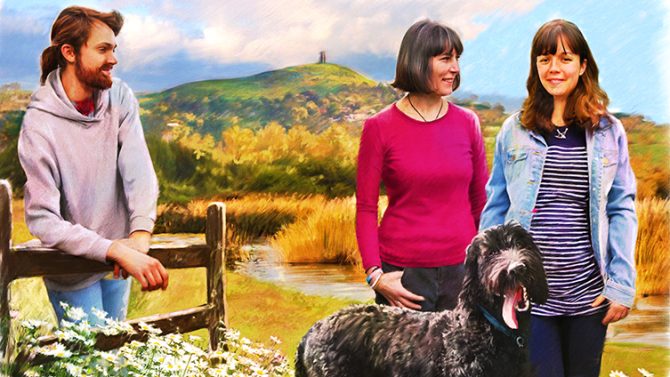
Paula Williams
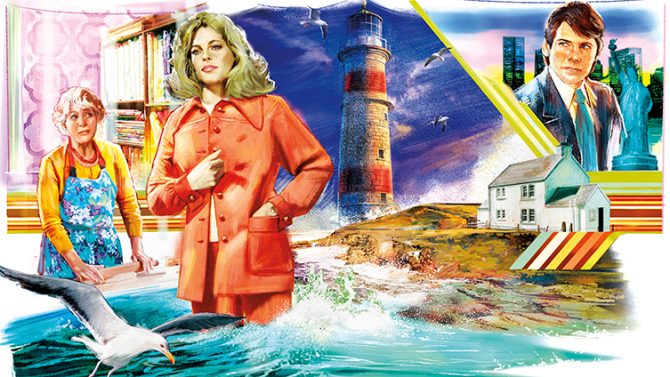
Deborah Siepmann


Alison Carter

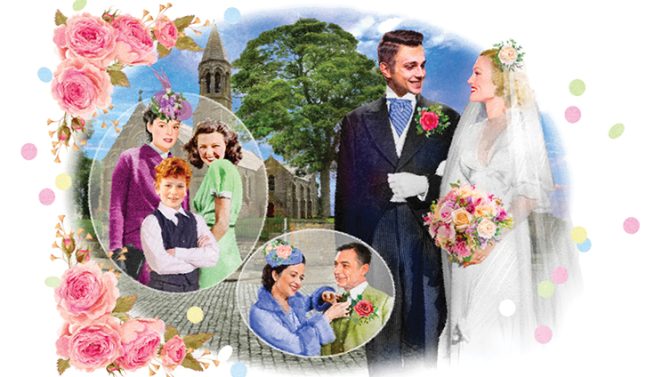
Teresa Ashby

Beth Watson
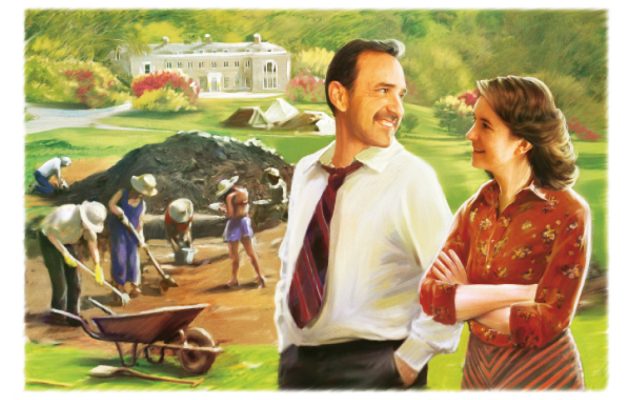
Alyson Hilbourne
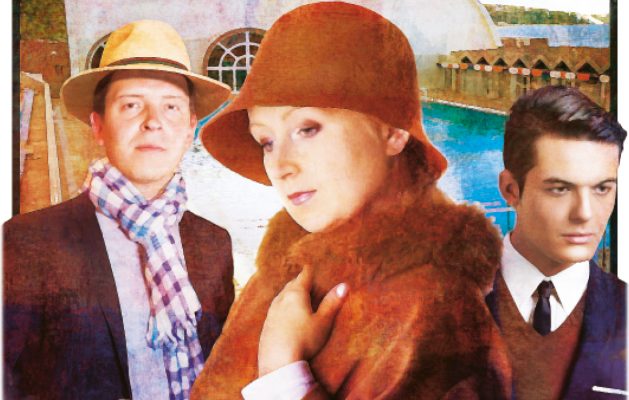
Katie Ashmore

Kate Hogan
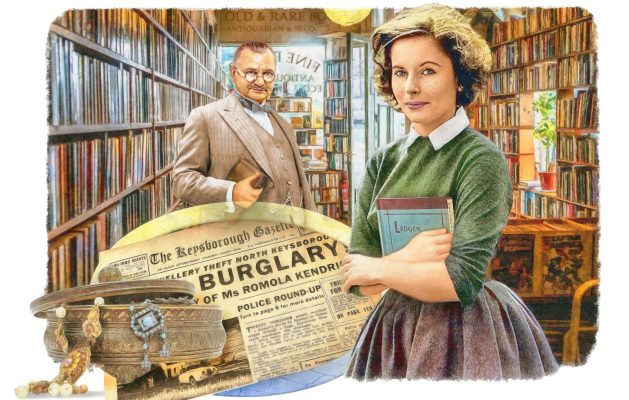
Liz Filleul

Beth Watson